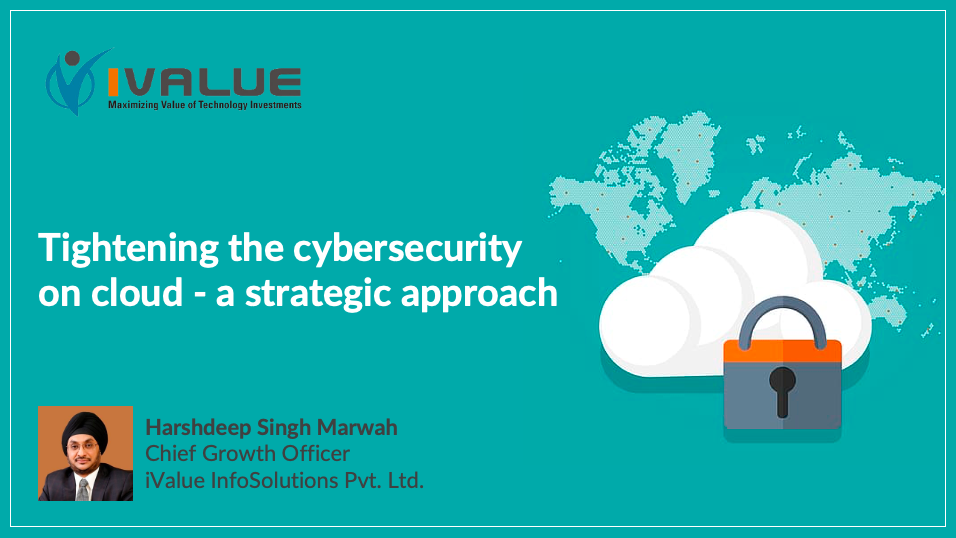Tightening the cybersecurity on cloud – a strategic approach - Harshdeep Singh Marwah, Chief Growth Officer, iValue InfoSolutions Pvt. Ltd.

The award-winning Cyberthreat Defence Report recently released from CyberEdge Group stressed on cyber security challenges across the year. These concerns were fueled by risks due to Covid-10 pandemic, WFH culture among others. Three out of four IT security professionals preferred cloud-based security solutions driving significant security infrastructure investments in cloud. Year 2020 also unfolded unprecedented data-breaches, ransomware attacks besides internal and third-party security risks. Now, with the increase in the number of businesses migrating to cloud, cyber-criminals are moving there too. With huge compromises occurring on cloud, it is all the more critical to protect valuable data and applications hosted in it.
This will safeguard businesses from losses on all fronts, financial, brand reputation and data.
Shared Responsibility and Cloud Security
There exists a confusion in organisations as to who should take the responsibility of the security aspect on cloud. At the outset, an important step is to review cloud contracts and SLAs that were signed with the Cloud Service Provider. The service provider clearly owns the responsibility for cloud infrastructure security. Similarly, SaaS vendors will claim responsibility of their applications that run on the cloud. However, the customer using the services of the CSP and SaaS provider is the custodian of the business and customer data, and thus needs to ensure overall security responsibility.
The enterprises using cloud services – IaaS, PaaS and SaaS must ensure that appropriate tools and technologies are deployed to sanitise and secure Enterprise Infrastructure, Data, Applications and Users. The overall architecture needs to align with the renewed working methodology, where the traffic between the two end states – 1. End Users and their devices 2. Cloud and Traditional Datacenters, which house applications and critical data of the enterprise are secure. Besides the data in transit and overall design must ensure complete cloud infrastructure and application inventory, identify any misconfiguration, notify non-compliances (industry, country and technology specific), and deliver data protection in addition to threat prevention for data at rest.
To achieve this, a comprehensive SASE (Secure Access Service Edge) platform with integrated and complementing technologies, covering – End-Point Posture Assessment, CSPM (Cloud Security Posture Management), CWP (Cloud Workload Protection), CASB(Cloud Access Security Broker), Data Protection Management, Threat Prevention (Both Known and Unknown), support for Zero Trust Access, and finally the stack supported across all key cloud vendors.
Defending internet attack surface is critical
With businesses increasingly having global presence and teams working across geographies, organisations are finding it very challenging to have an overall visibility into its internet assets and services. Assets are complex in nature, connecting cloud instances, servers, endpoints and IoT that are dynamic and growing. It is important for organisations to have high visibility into them to ensure Attack Surface Reduction and remediate issues on priority.
Configuring and implementing a robust cyber security strategy on cloud is key for protecting the data, applications, customer’s privacy and adherence to regulatory compliance. Cyber security teams have to work at creating a layered security across technology and tools, workforce and processes for successfully strengthening the security on cloud.



